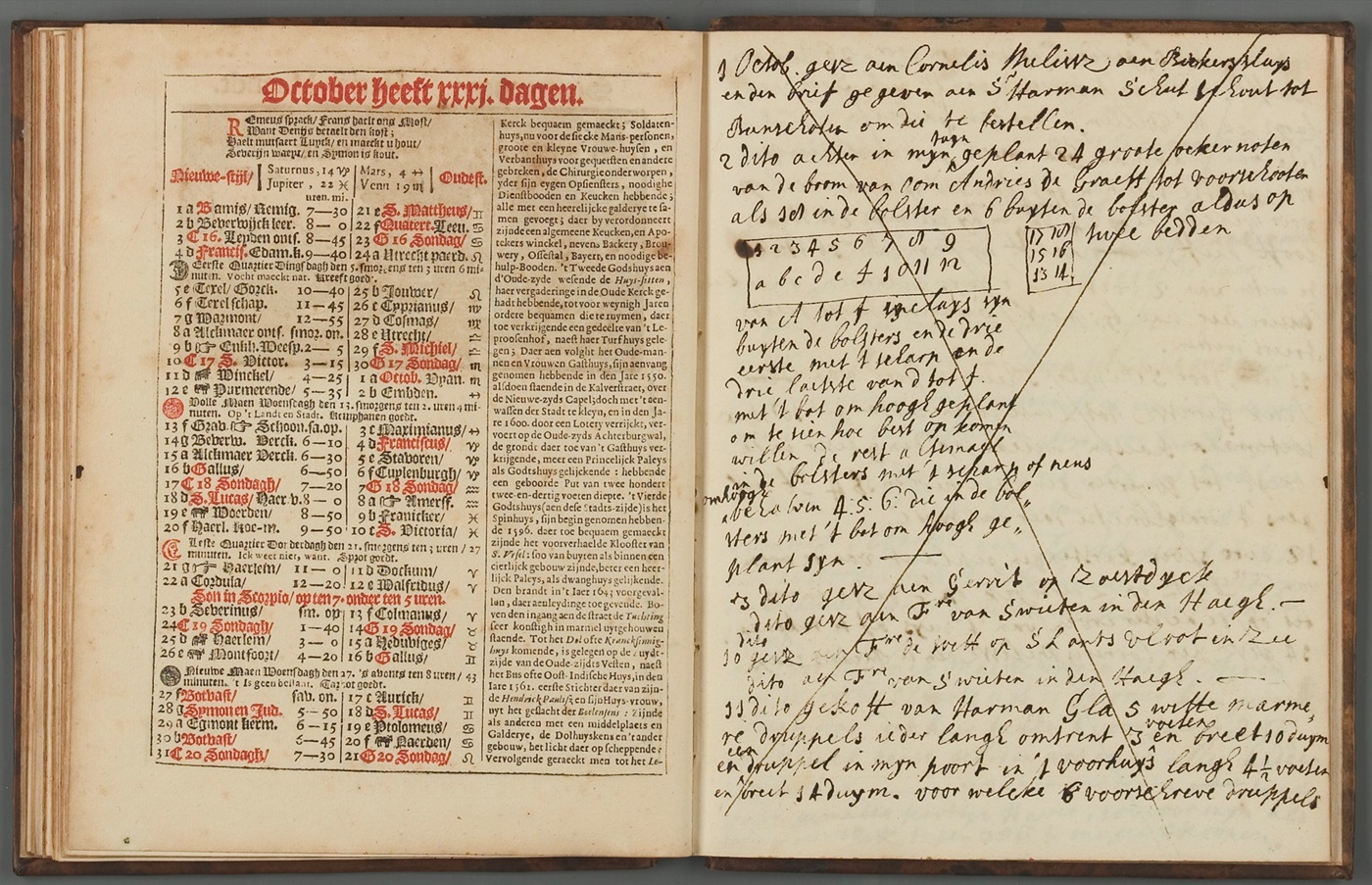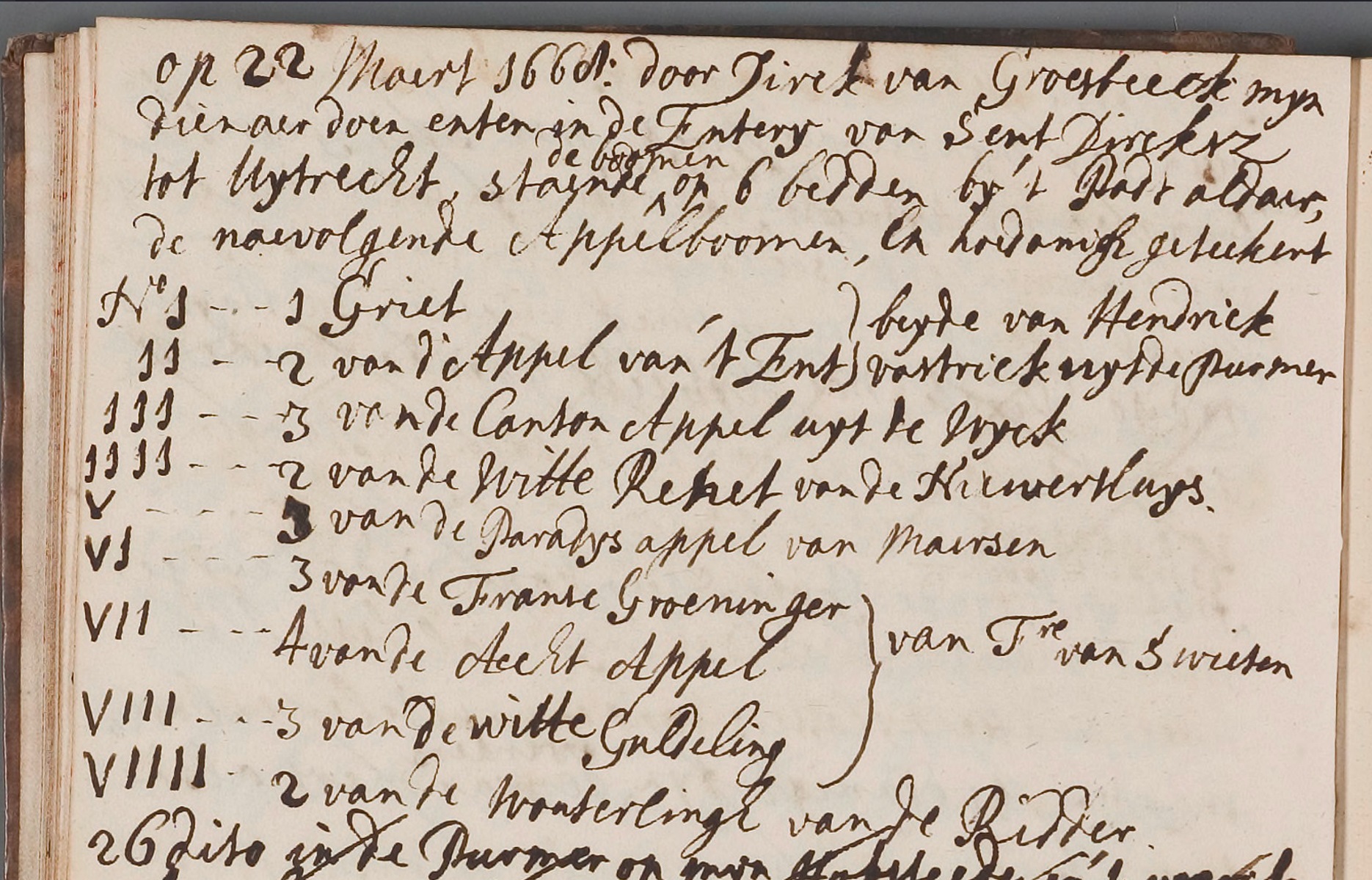
als 18 in de bolster en 6 buyten de bolster aldus op twee bedden" (ACA 76, inv. nr. 188 (1666), 2 October.
In addition to renovations inside their new home at Herengracht, work on the garden also commenced immediately. On 2 October 1666, Pieter experimented with 24 walnuts coming from the country estate of his uncle - the famous burgomaster Andries de Graeff - in Voorschoten. He planted them in two beds in the garden, some with their husks and others without, to determine which would grow more effectively. He then made a note and a sketch in his almanacs (see image below) as a memory aid to remember where he planted what and how.

In other almanac entries he mentions additional plants he planted in the garden: chestnuts (12 October 1666), red currant (4 November 1666 where he also noted that they needed to be exposed to sunlight, otherwise they would not turn out sweet) and apple trees. We know about the apple tree thanks to some of his notes. In one, dated 19 March 1668, he records the meeting he had in the kitchen with Sent Gerritsz, running a tree nursery in Utrecht, who will graft some apple trees for him. On 22 March 1668 he lists the types of appeltrees (see image below). On 27 November 1674, moreover, he mentioned having sent "a grafted apple tree on a paradise rootstock" coming from his garden to Cornelis Olfertsz in the Purmer polder.

Pieter was not alone in taking care of the garden. In his almanacs he occasionally mentions other people coming to work there, such as one Dirck Coningh who he paid 98 stuivers for one day of work on 15 March 1675. Also, there were chickens and pigeons lofts ('hoenden en duijvehocken', mentioned on 9 May 1687) and an area dedicated to textile bleaching ('bleekveld'). In the bleekveld, Pieter's probate inventory records the presence of 'four lead-bronzed little statues of the four seasons of the year' and one of Mercurius, the Roman god associated with trade and financial prosperity who was also painted on the door of Pieter's home office (see article 'Reconstructing the library: The doors' in this edition):

Written by Chiara Piccoli